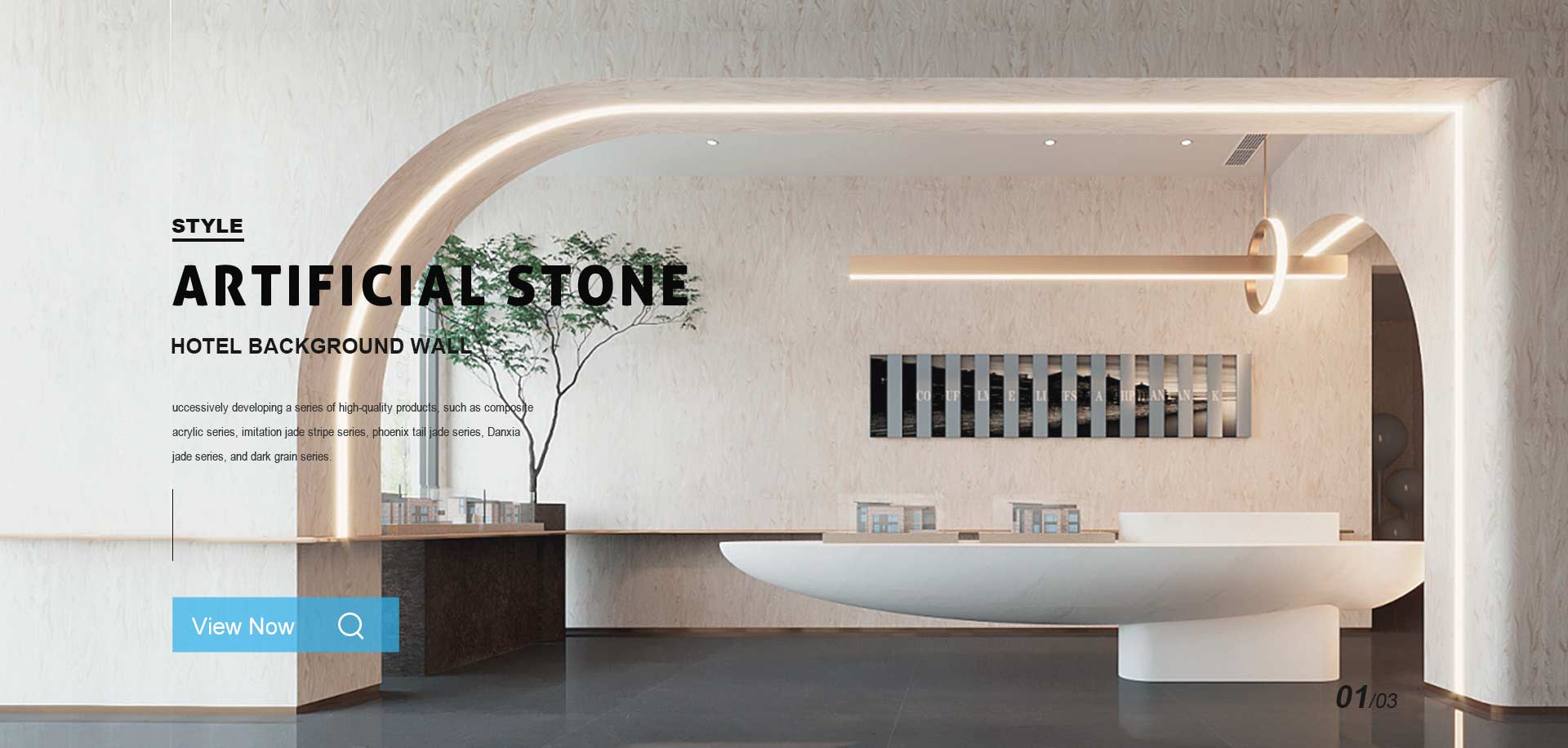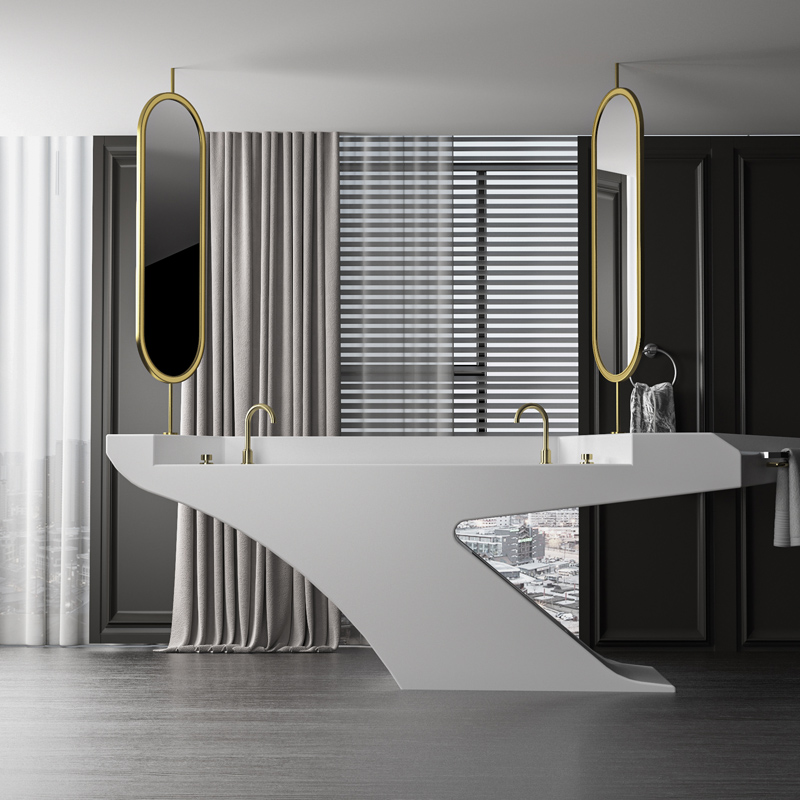
A bathroom vanity with artificial stone refers to a bathroom cabinet that incorporates engineered stone materials for its countertop, sink basin, or other surfaces. Artificial stone, also known as engineered stone or quartz surface, is a composite material made from 93-95% crushed natural quartz bound with 5-7% polymer resins and pigments. This combination creates a durable, non-porous surface that outperforms many natural stones in terms of consistency and maintenance requirements.
Key manufacturing note: The production process involves vibro-compaction under 100 tons of pressure and curing at 90-120°C, resulting in a material with Mohs hardness of 7 (comparable to granite) and flexural strength of 50-60 MPa.

Artificial stone vanities exhibit exceptional durability with:
Compressive strength: 150-200 MPa (surpassing natural marble)
Impact resistance: 10-15 J/cm²
Thermal shock resistance: withstands 150°C temperature differentials
The non-porous surface (water absorption <0.02%) prevents bacterial growth and mold formation, making it ideal for bathroom environments. Testing shows 99.9% reduction in bacterial colonies compared to porous natural stones.
Artificial stone demonstrates excellent resistance to:
Household acids (vinegar, lemon juice) - no etching at pH >2
Cosmetic products - resistant to acetone, alcohol, and peroxide
Cleaning agents - compatible with pH 5-9 solutions
Available in:
120+ color options with consistent patterning
Surface finishes ranging from polished (95° gloss) to honed (25° gloss)
Integrated sink basins with seamless joints (0.1mm tolerance)
With thermal expansion coefficient of 20-25 x 10⁻⁶/°C and minimal moisture movement, these vanities maintain structural integrity in humid environments better than wood-based alternatives.
Master bathrooms: Large double-sink vanities (60-72") with integrated stone basins
Powder rooms: Floating vanities (18-24" depth) with full-height backsplashes
Guest bathrooms: Custom vanity tops (30-48") matching shower surrounds
Luxury homes: Book-matched slab installations with 2cm or 3cm thickness
Hotel bathrooms: Continuous vanity runs (up to 10' lengths) with anti-microbial treatments
Healthcare facilities: Seamless designs meeting ANSI/NSF 51 standards
Senior living: ADA-compliant vanities with 34" height clearance
Restaurants/Clubs: High-traffic vanities with abrasion-resistant surfaces
Design tip: For contemporary applications, consider mitered edges (45° bevel) on 2cm material to create the appearance of thicker slabs while reducing weight by 30%.
Use pH-neutral cleaners diluted to 5-10% concentration
Microfiber cloths with 300-500 gsm density for streak-free drying
Immediate wipe-down of cosmetics to prevent dye migration (limited to 2-hour exposure)
Quarterly application of nano-sealants (SiO₂ based) to maintain hydrophobicity
Annual inspection of undermount sink brackets (304 stainless steel fasteners recommended)
Biannual polishing with diamond abrasive pads (3000-5000 grit) for high-gloss surfaces
For specific contaminants:
Organic stains: Poultice of 40% hydrogen peroxide and powdered silica
Ink dyes: Isopropyl alcohol (70% concentration) with 5-minute dwell time
Hard water deposits: pH 3-4 acidic cleaners with maximum 10-minute contact
Minor scratches: Automotive polishing compound (0.5-1μm abrasive)
Chips: Epoxy repair kits with 80-85 Shore D hardness matching
Thermal cracks: Professional repair requiring UV-cured adhesives and color matching
Proper installation ensures longevity:
Substructure must provide continuous support (max 16" spacing)
Use neoprene pads (1/4" thickness) between stone and cabinet
Allow 1/8" expansion gap per 10 linear feet
Seal perimeter with silicone (ASTM C920 compliant)